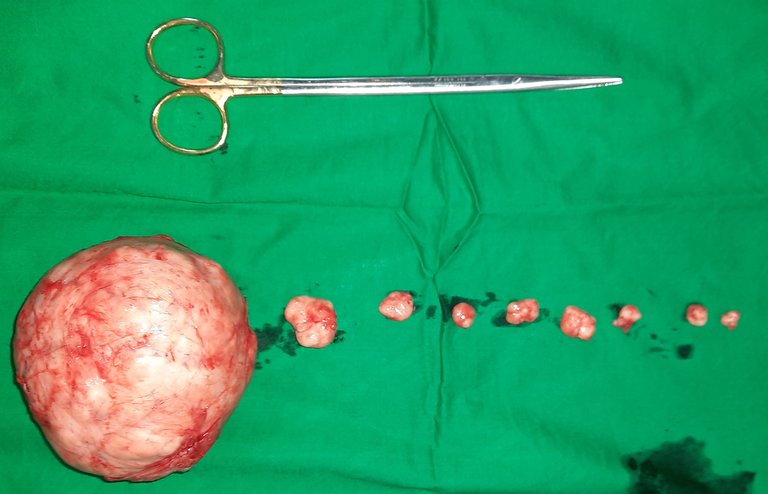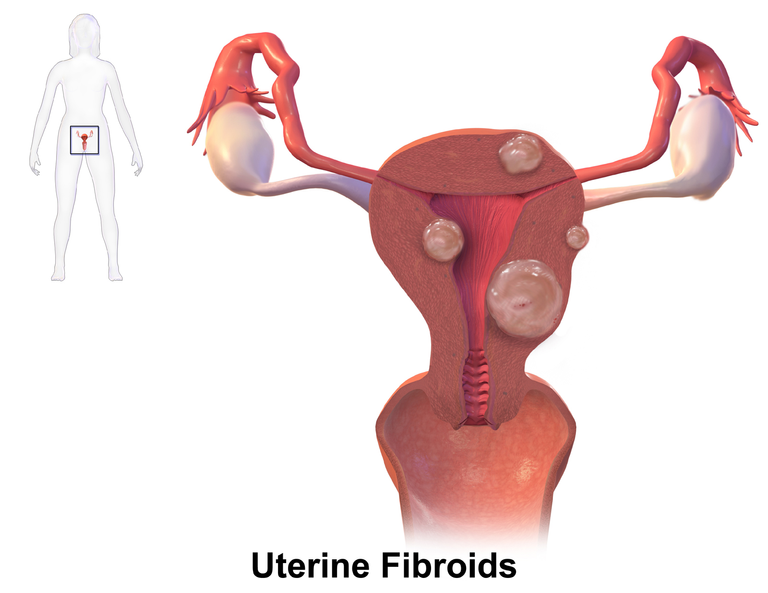Understanding Uterine Fibroids: What You Need to Know
Uterine Fibroid, popularly know as fibroid is a non-cancerous tumor that grows inside the Uterus. This tumor is found in women and study has shown that black women are more susceptible to having the tumor than other race of women as they are 2 to 3 times more likely than women of other race. That said, let's discuss Fibroid today.
If you need any medical advise, please seek the help of a medical practitioner. It is very important to visit a hospital regularly for checkups because your health is all that matters to you when you fall ill. That said, you do not need to undergo any treatment for fibroid unless it is causing symptoms like abdominal pain, abdominal distention, and in serious cases bleeding. Fibroid can be very tiny and they can grow bigger than a tennis ball. Fibroids can be intramural, Submucosal, or subserosal. Intramural fibroid develop inside the muscle of the womb, Subserosal fibroid develop outside the walls of the uterus and it can reach the pelvis, and submucosal fibroid develops inside the womb inner lining.
According to research, fibroid is common in women who are overweight. According to the American Fibroid Center, gaining 20% more than your advised body weight (BMI) is a risk of developing the tumor in the uterus. A meta-analysis between 1992 and 2020 covering 24 studies with 325 899 participants in 19 593 cases showed a positive association between obesity and the risk of uterine fibroids.
I have a friend who just put to birth using surgery and this was as a result of fibroid. Fibroid can cause difficulty with childbirth and although the cause is yet unknown, there are risk factors that can lead to the prevalence of fibroid and if you have been reading this post, then you must have seen some of the risk factors. Other risk factor include early menstrual flow, obesity, dietary choices such as not taking fruits and vegetables, and consumption of alcohol. Researchers are linking fibroid to the hormone Estrogen and this is why people who have elongated menstrual cycle are at risk.
Back to fibroid and childbirth, having fibroid isn't an automatic ticket to being infertile, if that was the case, then millions of women would be infertile. Only 1 to 2% of fibroids can lead to infertility. Although it is a tumor, it doesn't elevate the risk of developing cancer as they can rarely turn to cancer. Fibroid can be removed through surgery, but not all fibroid related surgeries are invasive.
Fibroid can be examined by a medical practitioner by checking using the hand or through ultrasound. This diagnosis are usually by chance for most people, either during a routine checkup or during antenatal checkups, or other gynecological checks. It is no surprise that women who go for antenatal checkups find out they have fibroids since it usually occur during the reproductive age of women because the estrogen level at the blood is higher during the time. When the estrogen level reduces fibroid can shrink down and that is why when women notice fibroid before menopause, they are often advise to let it be.
Understanding the symptoms, risk factors, and treatment options is crucial for managing fibroids effectively. Regular medical checkups and consultations with healthcare professionals are essential for maintaining your health and well-being. If you suspect you have fibroids or experience related symptoms, seek medical advice to explore the best course of action.
Read More
https://www.nhs.uk/conditions/fibroids/treatment/
https://www.healthline.com/health/fibroids-diet
https://fibroidexpert.com/blog/can-weight-gain-cause-fibroids-to-grow/
https://pubmed.ncbi.nlm.nih.gov/33067250/
https://www.ncbi.nlm.nih.gov/pmc/articles/PMC3608270/
https://www.ncbi.nlm.nih.gov/pmc/articles/PMC8391505/
https://www.ucsfhealth.org/conditions/fibroids


Thanks for your contribution to the STEMsocial community. Feel free to join us on discord to get to know the rest of us!
Please consider delegating to the @stemsocial account (85% of the curation rewards are returned).
Thanks for including @stemsocial as a beneficiary, which gives you stronger support.